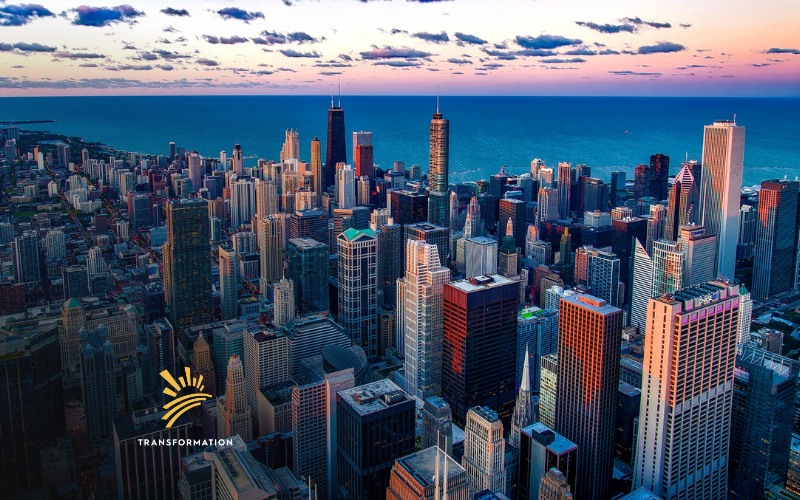Resilient Cities: The Role of Energy in Urban Areas
According to the World Bank, more than 50% of the world’s population lives in urban areas. The effects of climate change, such as drought and lack of opportunity, hit urban populations especially hard, putting billions of people at risk if nothing is done. It’s also affected people in ways that might not seem to make sense on the surface, driving millions more to cities looking for safety and security.
Healthy Cities, Healthy Planet
As our planet rapidly urbanizes, cities bear a heavy energy burden, accounting for a large swathe of global energy demand. Transportation, buildings, public services, and infrastructure are ponderous contributors to greenhouse gas emissions and air pollution. Rising urban energy usage aggravates an already challenging climate situation.
Here, we’ll explore the link between energy, public health, and climate change in urban settings. We’ll also take an in-depth look at the ways leaders in urban environments are using innovation for social and environmental risk management. These leaders have the lofty goal of improving public health and the quality of life for urban dwellers in an environmentally sustainable way, for the long term.
1. Energy Use and Public Health
A combination of industrial activities, vehicle emissions, and energy production has led to an increase in air pollution within urban centers. Air quality tests show high levels of particulate matter (PM2.5) and pollutants like nitrogen oxides (NOx) and sulfur dioxide (SO2). These toxins bring increased health conditions such as respiratory illness and heart diseases.
2. Population Density and Extreme Heat
Another concern is the Urban Heat Island Effect, a phenomenon that results in higher air temperatures in urban areas where the population density is higher. This is mainly due to an abundance of heat-absorbing surfaces, such as parking lots, and limited green spaces.
These two factors contribute to higher temperatures in the city. Why? Parking lots build up heat waves as the surface temperature rises, raising the average temperature of the area around them.
As well, plants act as natural air conditioning. Therefore, with fewer (and shrinking) green spaces, there is less natural cooling and more extreme heat. In turn, extreme temperatures can cause heat-related illnesses, especially among vulnerable populations.
3. Urbanization and Mental Health
Life in cities has always been characterized by a more frenzied and fast-paced lifestyle compared to suburban or rural areas. This brings the everyday problems of city living, such as noise pollution and the lack of green areas mentioned earlier.
Over time, these stressors take their toll on mental health, leading to higher rates of anxiety, depression, and other related disorders. Additionally, the overall disconnection from nature in urban areas can exacerbate these mental health concerns.
4. Water and Food Security
There is a distinct impact on water availability and agricultural productivity due to climate change. This is only made worse in densely populated areas.
What’s more, rising sea levels can contaminate public water sources. This increases the exposure of coastal cities to flooding and inhibits access to safe, fresh drinking water. Lack of clean water also leads to diminished food production and food safety.
The exposure to extreme weather events also means they’re more vulnerable to urban infrastructure damage, water scarcity, and increased health risks. Low-income areas suffer the brunt of these consequences, and they are less able to recover.
Becoming Part of the Solution
Energy use plays a key role in the health of urban centers. However, cities are becoming part of the solution through initiatives like:
- Renewable energy generation through solar and hydroelectric power
- Energy efficiency measures, such as retrofitting buildings with energy-efficient technologies like LED lighting, efficient HVAC systems, and smart meters
- Sustainable transportation, like electric buses, trams, and trains
- Encouraging the use of bicycling, walking, and car-sharing programs
Green Design Innovations
There is an increasing call to create urban resilience through green design innovations. For example, eco-friendly buildings can use renewable energy, efficient insulation, natural lighting, and ventilation, and integrate green roofs and walls.
There’s also a drive to implement smart technologies and incorporate green spaces into city designs. Simply put, this means increasing the amount of green land cover: in other words, building parks, community and rooftop gardens, and vertical green plantings.
In an effort to improve sustainability while keeping costs down, member cities are joining together to share best practices, trade knowledge, and feed innovation. Initiatives like the C40 Cities Climate Leadership Group, the Global Covenant of Mayors for Climate & Energy, and various city networks promote teamwork among cities, enabling them to address air pollution, climate change, and public health challenges together.
Case Studies: How Cities Around the World Are Rising to the Challenge
Cities and countries worldwide have been at the forefront of implementing measures to promote healthier, more sustainable environments by harnessing renewable energy sources. Here are some notable examples:
Copenhagen, Denmark
Copenhagen is renowned for its ambitious goal to become carbon neutral by 2025. The city, which is considered Europe’s greenest Capital, has made significant strides in renewable energy adoption, which include:
- Investing heavily in wind power
- Converting to 100% renewable energy sources
- Implementing district heating systems that utilize waste heat and biomass
Reykjavik, Iceland
Considered a model of sustainability, Reykjavik has emerged as a global leader in renewable energy use. It has achieved this status primarily through geothermal and hydroelectric power, which is widely used for heating and electricity. Geothermal and hydropower plants provide sustainable heating to over 90% of Reykjavik’s buildings.
San Francisco, California (US)
In the United States, the city of San Francisco has made remarkable progress in transitioning to renewable energy. To reach its goal of becoming 100% carbon-free by 2030, it has many incentives and built environments in place, including:
- Large-scale investment in solar power plants, including the 150-megawatt California Valley Solar Ranch
- Placing rooftop solar installations on residential and commercial buildings
- Supporting community-based renewable energy projects
Vancouver, Canada
Another North American city, Vancouver has started multiple plans to promote renewable energy and sustainability. The ultimate goal is to get 100% of its energy from renewable sources before 2050.
Initiatives include the use of renewable energy through programs like Solar City. Vancouver also promotes district energy systems that use innovative renewable energy sources like biomass, geothermal, and wastewater heat recovery.
Adelaide, Australia
In the land down under, the city of Adelaide has taken significant steps towards renewable energy adoption. The city is dedicated to reaching 100% renewable electricity by 2025 and makes wide use of its notable solar resources.
Adelaide has also:
- Installed rooftop solar systems, including on public buildings and community centers
- Invested in battery storage systems
- Bolstered the reliability and efficiency of its renewable energy infrastructure
Masdar City, United Arab Emirates
Not to be outdone, Masdar City in Abu Dhabi aims to become one of the world’s most sustainable urban developments. The city uses renewable energy technologies - CSP energy (Concentrated Solar Power) and wind - to generate clean, renewable energy.
Masdar City is also a testing ground for innovative sustainability solutions. These include smart grid systems, energy-efficient buildings, and sustainable transportation options.
These examples illustrate the various approaches cities are taking to harness renewable energy sources and create healthier, more sustainable urban environments.
Final Thoughts
As urbanization continues throughout the world, it’s essential for stakeholders to consider how development can be shaped to prioritize the health and resiliency of our cities. That also means prioritizing investments in green, renewable energy and adopting sustainable practices that will reduce the impact of climate change on public health and viability.
Together, we can create healthier, more resilient cities and preserve the quality of life on our planet.




Leave a Reply